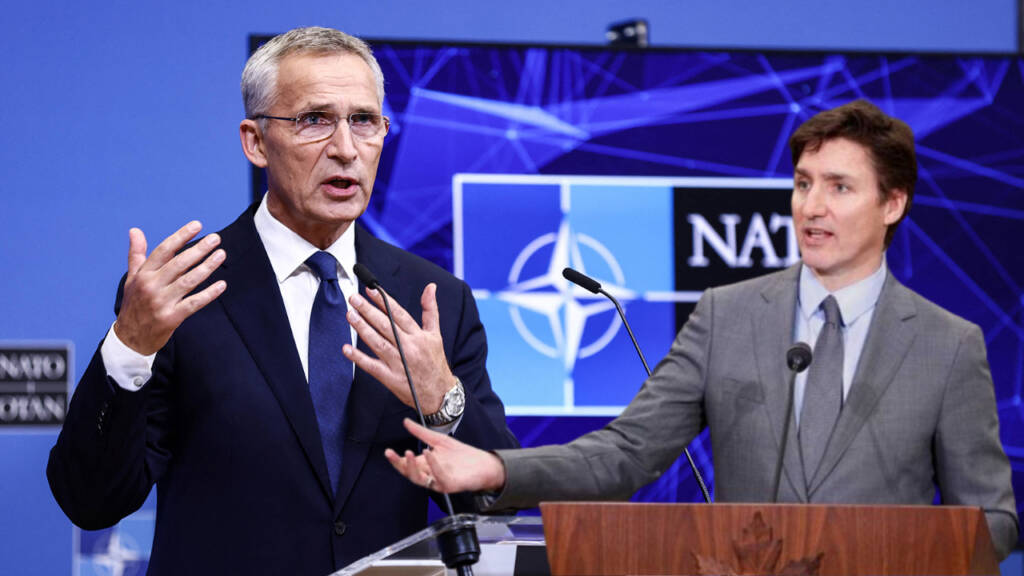NATO, the North Atlantic Treaty Organization, was founded in 1949 as an intergovernmental military alliance consisting of 30 member countries. The primary objective of NATO is to ensure the collective defense of its members against external threats. But in recent years, there has been growing concern over Canada’s relatively low contribution to NATO’s defense spending, with calls for increased spending to ensure greater security and stability.
Recently, criticizing Canada, albeit subtly, NATO sec Gen Jens Stoltenberg said that the two per cent target is the bare minimum and if the targets are not met, there will be consequences for its security.
You see, defense spending of Canada has been a topic of much debate in recent years, particularly in relation to its contributions to NATO. As a member of NATO, Canada is expected to contribute 2% of its GDP towards defense spending, but it has consistently fallen short of this target. In 2020, Canada’s defense spending was just 1.4% of its GDP, which is significantly lower than other NATO members like the United States, which spends 3.7% of its GDP on defense.
In late March, NATO published an annual report that showed Canada’s defence spending amounted to just 1.29 per cent of GDP in fiscal 2022-2023.
Read More: Canada’s Role in the NATO-US Assault on Syria: A Regime Change Gone Wrong
It’s not much of a stretch to say Canada has no plan to meet that 2 per cent target. But now, the patience of NATO is waning.
Canada’s failure to meet its defense spending target has been a source of criticism from other NATO members, particularly the United States. In 2018, U.S. President Donald Trump publicly criticized Canada’s low defense spending and suggested that Canada was not contributing its fair share to the alliance. This criticism was not unfounded, as Canada’s low defense spending has had a direct impact on its ability to fulfill its commitments to NATO.
The pressure on Canada to focus on funding the needs of its own military, as opposed to the overall alliance, is growing — especially since Russia’s full-on invasion of Ukraine last year.
There are several reasons why Canada’s low defense spending is a cause for concern. Firstly, it undermines the collective defense of NATO as a whole. If Canada is not able to meet its commitments to NATO, then it becomes a liability rather than an asset to the alliance. This is particularly important given the current geopolitical climate, where threats from Russia and China are increasing.
Secondly, Canada’s low defense spending has a direct impact on its own military readiness. With inadequate funding, the Canadian Armed Forces (CAF) are not able to maintain the necessary levels of training, equipment, and personnel required to respond effectively to external threats. This was highlighted in 2019 when Canada was forced to ground its entire fleet of CH-148 Cyclone helicopters due to mechanical issues, leaving the CAF without a crucial airborne asset.
Read More: NATO wanted Canada to send its military to Europe; Trudeau sent more diplomats instead
growing pressure on Canada to focus on funding the needs of its own military, as opposed to the overall alliance, is a warning sign that Canada may be in danger of getting thrown away from NATO. NATO Secretary General Jens Stoltenberg’s insistence that the two per cent target is the bare minimum highlights the increasing demands put upon Canada to meet its commitments to the alliance. This is especially true in light of Russia‘s full–on invasion of Ukraine last year, which has caused a renewed focus on military spending from NATO‘s members.
The increasing pressure from NATO on Canada to increase its defence spending is a sign that the alliance is losing faith in Canada’s commitment to the cause. This is especially true considering that Canada is currently spending only half of the two percent target of GDP on defence. This could be seen as a sign that Canada is not taking its commitments to the alliance seriously and is not willing to contribute its fair share.
Furthermore, the fact that the Secretary General is now publicly demanding for Canada to meet the two percent target is a sign that the alliance is running out of patience with Canada. This is especially true when considering that the Secretary General is usually very diplomatic when it comes to the issues of military spending among the member states.
Ultimately, the pressure on Canada to focus on funding the needs of its own military, as opposed to the overall alliance, is a sign that Canada needs to take its NATO commitments more seriously if it wants to remain a member of the alliance. The two percent target is the bare minimum, and Canada needs to meet it if it wants to remain a part of NATO. If Canada does not take its commitments seriously, it could find itself getting thrown away from NATO in the near future.
https://www.youtube.com/watch?v=XcUifVRywOQ&t=21s
